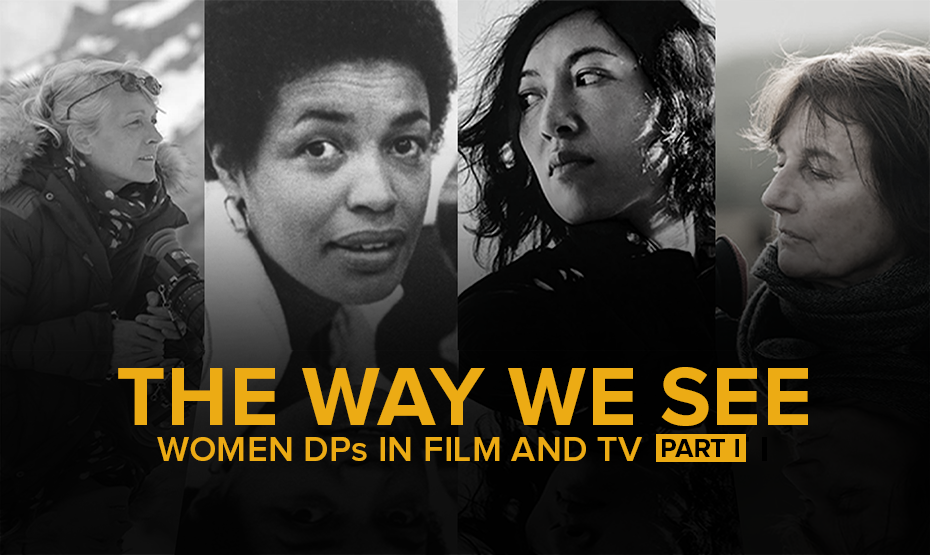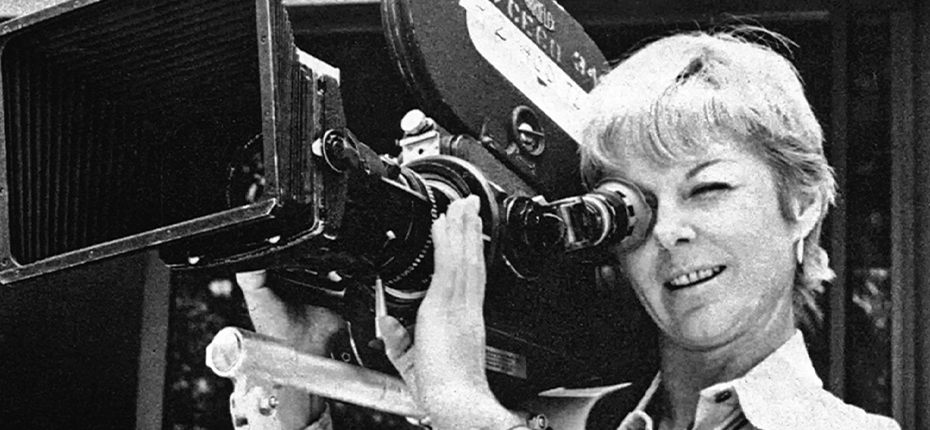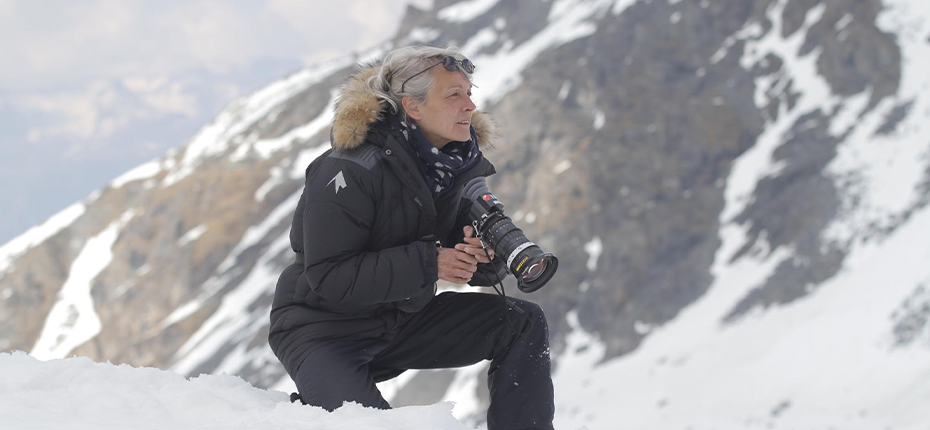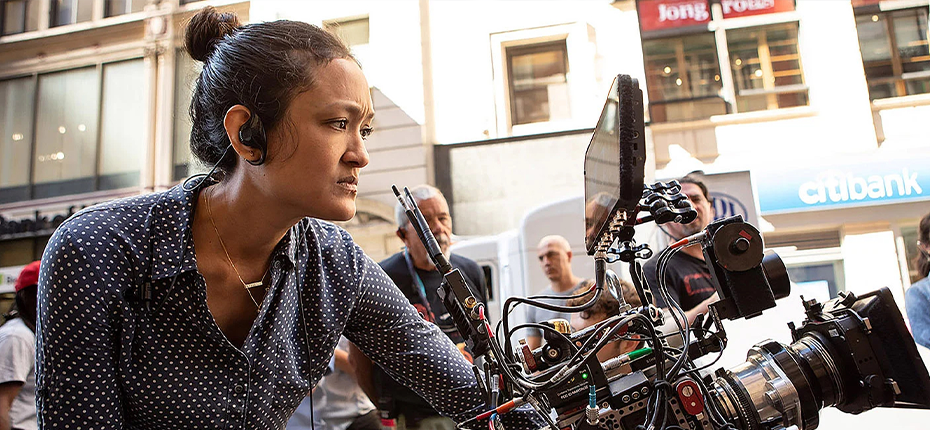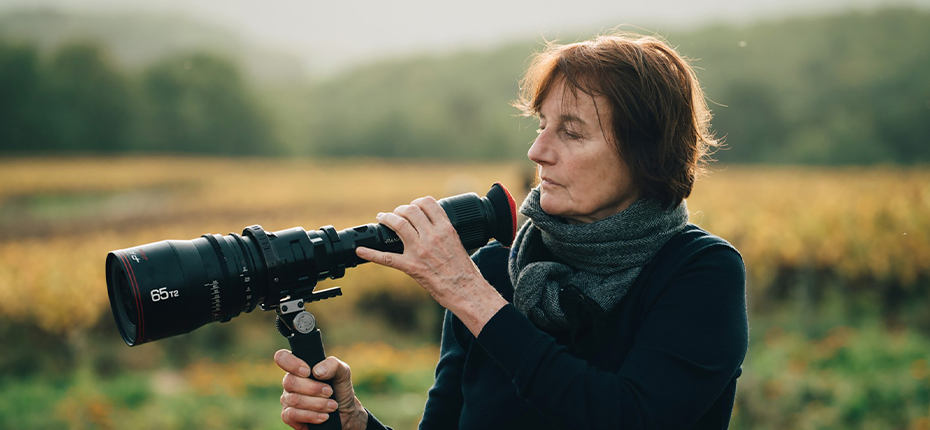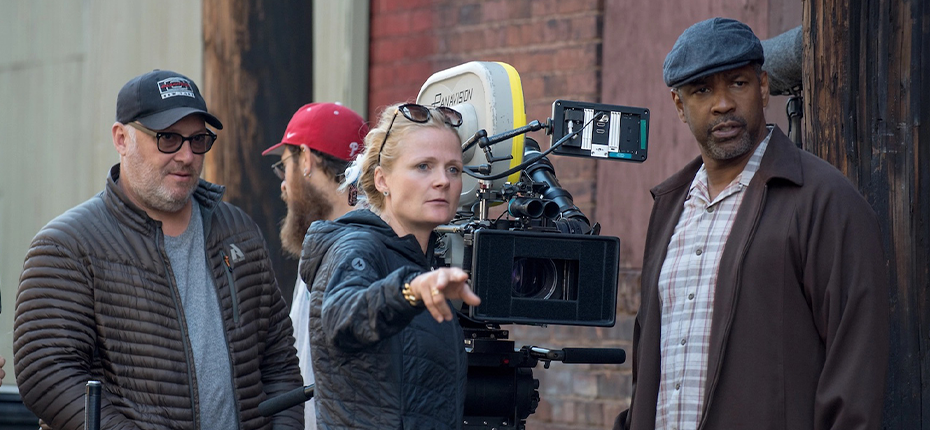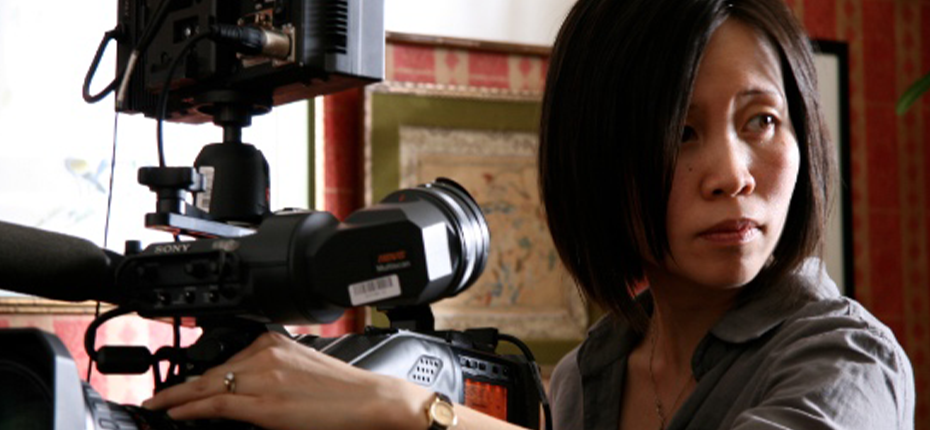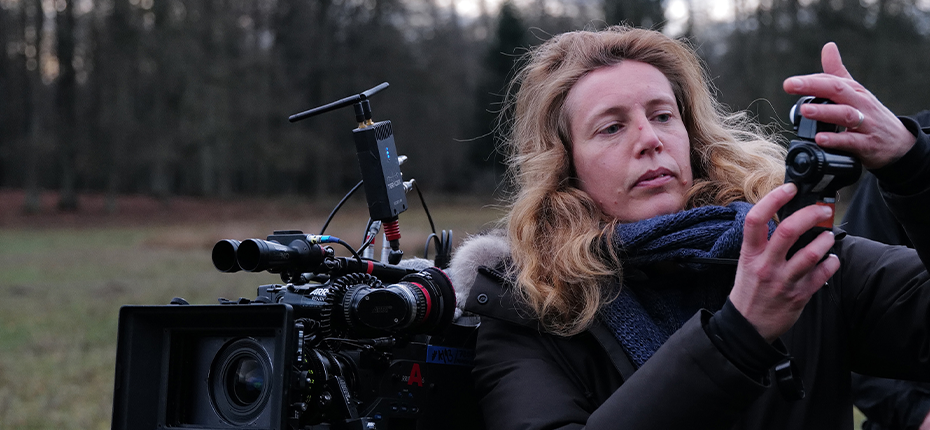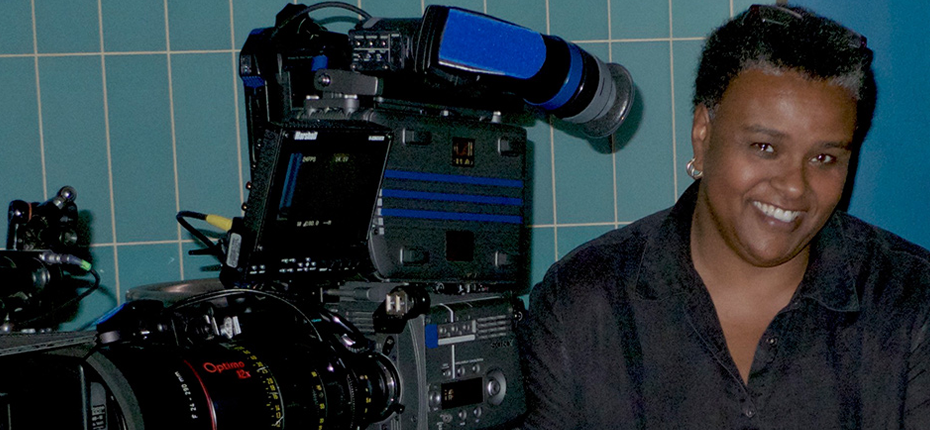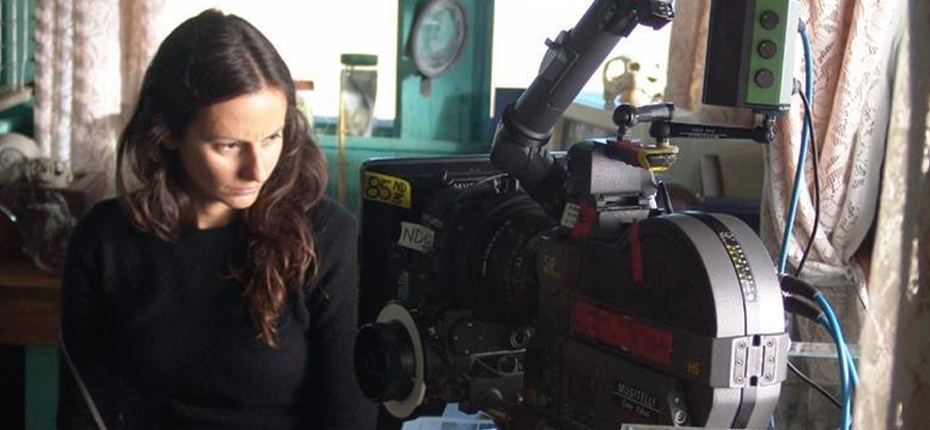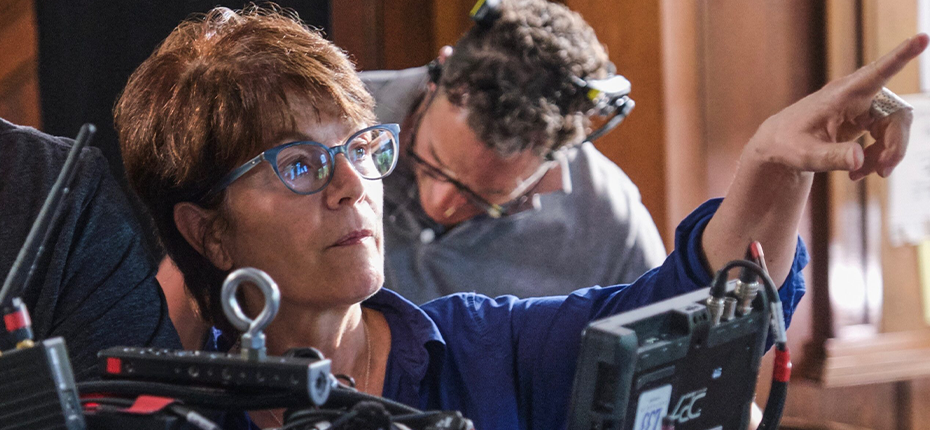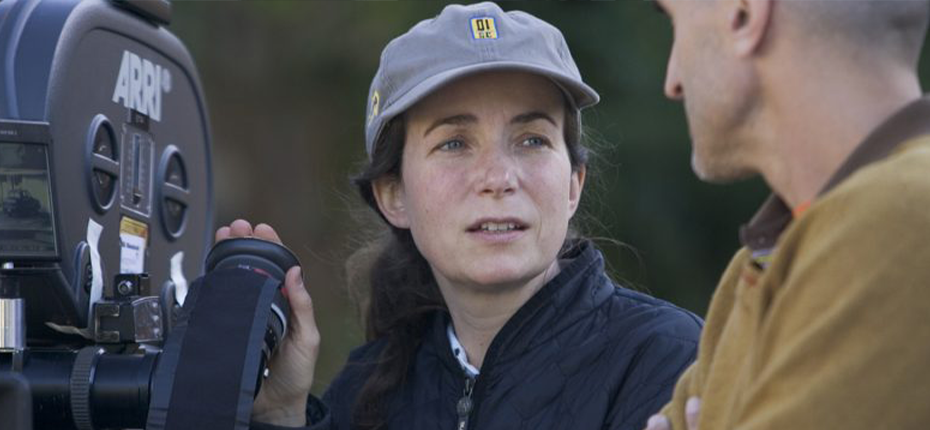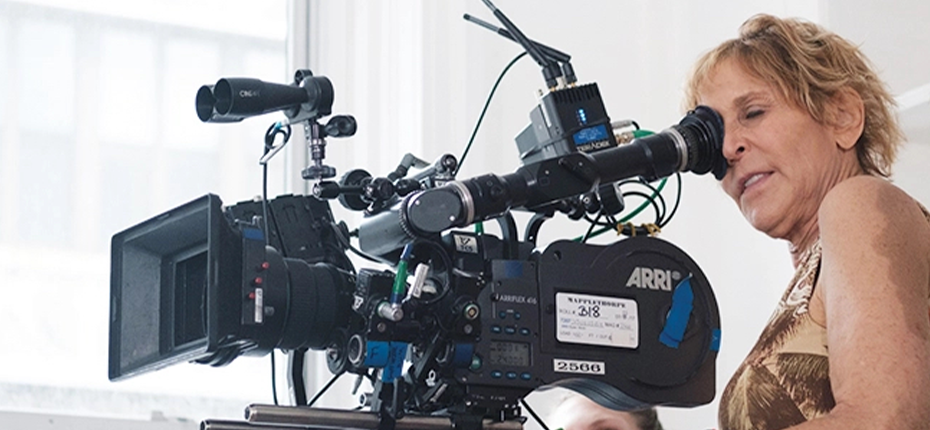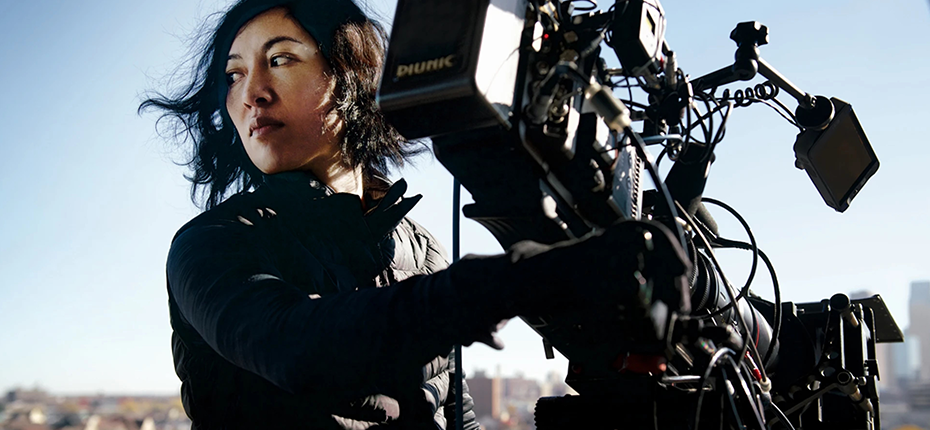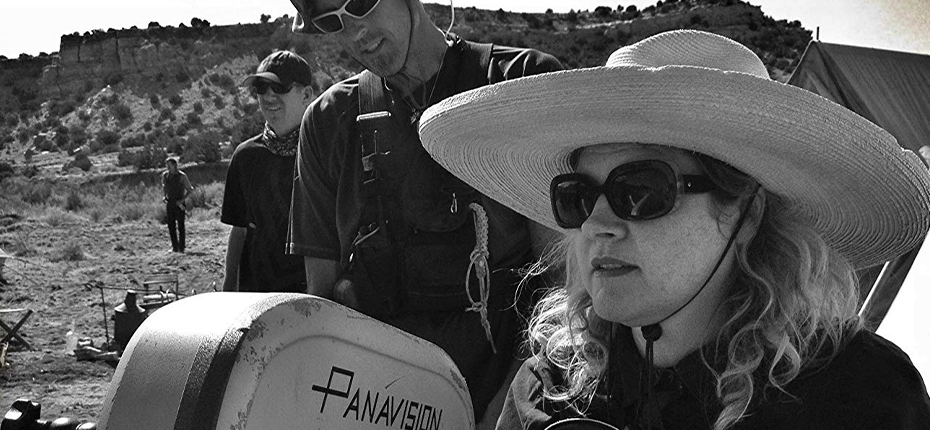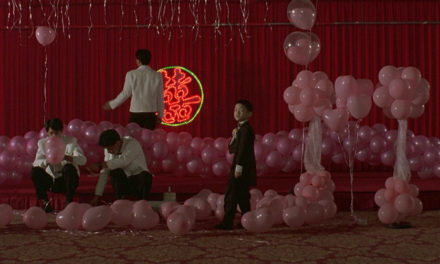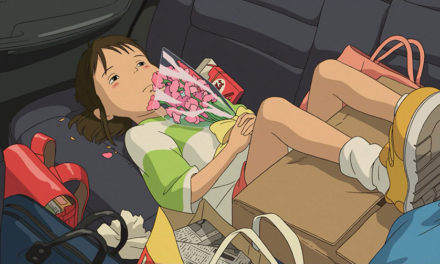THE WAY WE SEE: WOMEN DPs IN FILM AND TV (PART I)
In celebration of Women’s History Month, ShotDeck is thrilled to devote the next two weeks on our blog to highlighting some incredible female-identifying cinematographers. Some of these DPs broke ground for other cinematographers to follow, some have lensed some of the most significant films and television shows of recent history, and some are among the rising stars of the industry today.
This list is focused on cinematographers primarily working in film and television, and is by no means exhaustive. There are so many more amazing female-identifying DP’s working in film and TV, as well as commercials, fashion and music videos. We hope this will serve as a launching pad for your inspiration to discover new artists, new styles and new possibilities in the craft of cinematography.
BRIANNE MURPHY
Geraldine Brianne Murphy was a British cinematographer and the first woman to both DP a major studio film and the first woman to be accepted into the American Society of Cinematographers. Murphy started developing her interest for films while running errands for the production manager of On the Waterfront, and in 1954 was hired as a photographer for the Ringling Brothers and Barnum & Bailey Circus. It was there that Murphy met and married notable B-movie director Jerry Warren, with whom she shot many of her first films.
Murphy’s career started taking off in 1975 after Richard C. Glouner, the DP of the show Columbo, suggested she take over for him (Murphy had previously worked with Glouner as a script supervisor). Later that year, she won an Emmy for her work on the NBC children’s show Special Treat. She served as the lead DP on Little House on the Prairie from 1974-86, Trapper John from 1979-86 and In the Heat of the Night from 1988-94. Murphy was nominated for four Emmy Awards between 1978 and 1987 (winning for Highway to Heaven in 1985), and in 1980, she became the first female DP of a major studio film on Fatso, directed by Anne Bancroft.
Besides being a DP whose work defined the look of many of America’s most watched television shows and films, Murphy was a vital technical innovator. In 1982, she and Donald Schisler were awarded a Scientific and Engineering Academy Award for the concept, design and manufacturing of the Mitchell Insert Systems Camera Insert Car and Process Trailer, a camera vehicle designed to protect technicians while filming cars in motion at close quarters.
Murphy often used the names “Brian” or “GB” to break through the male-dominated industry. When she first attempted to join her local union branch in 1973, she was told by one officer that she’d be admitted “over my dead body.” Murphy was the only female member of the ASC for over 15 years after she was admitted. Her work on major television shows and films formed one of the most recognizable bodies of work of any cinematographer in the 70s and 80s, and she remains to this day one of the most important pioneers in film history.
JESSIE MAPLE
Jessie Maple is an American cinematographer, director, and civil rights pioneer within the film industry. She was the first Black woman to produce and direct an independent feature length film, the first Black woman admitted to the New York camera operators union, and a pioneering producer of documentary short films.
Maple was born in Louisiana in 1947, and received her film education through Ossie Davis’ Third World Cinema and the National Education Television Training School, which was run by WNET public television in New York City. Her training allowed her to get work as an apprentice editor for Shaft’s Big Score! and The Super Cops. After joining the Film Editor’s Union, she set out to join the Cinematographer’s Union. Maple became the first Black woman to be inducted as a member of the International Photographers of Motion Picture & Television Union. When she got in, other union members sought to blacklist her from the studios. Maple decided to sue ABC, CBS and NBC all at the same time and won.
Maple worked for much of the 1970s as a news camera operator. During that time, she developed innovative shooting techniques as a method of resisting racism in news editing. Maple designed and executed shots that created editing patterns in camera, making it virtually impossible to later re-edit a story.
In 1981, Maple directed and shot the film Will, the first independent feature-length film directed by a Black woman. Shot on location in Harlem on a budget of $12,000, the film marked the screen debut of Loretta Devine, and was restored by the New York Women in Film and Television’s Women’s Film Preservation Fund in 2013.
Maple is one of the most important Black filmmakers of the 20th century, breaking boundaries for women of color in the field and pioneering a wave of independent filmmaking that would pave the way for the Black New Wave of the late 80s and early 90s.
Agnès Godard is a French cinematographer whose work has helped define French independent cinema for over 30 years. She has collaborated with filmmakers such as Wim Wenders, Agnès Varda and Ursula Meier, but is perhaps best known for her work with French director Claire Denis, with whom she has made over 15 films.
The daughter of an amateur photographer, Godard originally set out to study journalism but switched to film, graduating from La Femis (which was then known as IDHEC) in 1980. Her first work in the industry came as a camera assistant, and Godard’s credits include assisting Robby Müller on Paris, Texas and Henri Alekan on Wings of Desire, both directed by Wim Wenders. Wenders would go on to hire Godard for her first film as a cinematographer on Room 666, a 50 minute made-for-television movie. It was on Room 666 that Godard met Claire Denis. Denis was working on the project as Wenders’ assistant director.
Denis and Godard went on to strike up one of the most significant director-DP relationships of the past 50 years. Godard worked as the camera operator on Denis’s debut feature, Chocolat in 1988, before shooting a 1990 documentary with her about Nouvelle Vague filmmaker Jacques Rivette. They then worked on the 1991 short film Keep It for Yourself (the same year that Godard shot Jacquot de Nantes with Agnès Varda). Godard and Denis’s shared credits include I Can’t Sleep, Beau Travail, Trouble Every Day, Vendredi Soir, Bastards and Let the Sunshine In.
Through their work together, Denis and Godard created a signature visual style for capturing immediacy and intimacy in their films. Godard’s philosophy on shooting films with Denis grew out of a desire to create images where the camera disappears, and where the action feels organic and spontaneous. Most of Godard’s operating came from the camera being on her shoulder, and from pushing for the first take to be the one that ended up in the final cut. Many of Godard and Denis’s frames are over-the-shoulder shots, and their working style evolved from Denis holding Godard’s shoulders while looking at the action from her perspective. The result is an intimacy, immediacy and fluidity that few director-DP collaborations have been able to as effectively achieve.
Autumn Durald Arkapaw is an American cinematographer whose work on both independent movies and more recently on the Marvel series Loki and film Black Panther: Wakanda Forever have made her one of the most in demand DP’s working in the industry today.
Durald studied art history at Loyola Marymount University, where seeing films such as Broadway Danny Rose and Raging Bull sparked her interest in cinematography. After college, she assisted Guy Livneh on the documentary television series On the Road in America, and her work on the series earned her admission to AFI’s cinematography program in 2006. While at film school, she shot the micro-budget features Macho (2006, dir. Rafael Palacio Illingworth) and Guadalupe the Virgin (2011, dir. Victoria Giordana). Durald was eventually introduced to Gia Coppola, with whom she made the 2013 film Palo Alto. The success of Palo Alto led Durald to shoot music videos for artists such as Haim, London Grammar and Solange Knowles. She also lensed independent films such as One and Two, Teen Spirit and The Sun is Also a Star. In 2021, Kate Herron asked Durald to shoot the Marvel TV show Loki, and the next year, she DP’d Black Panther: Wakanda Forever for director Ryan Coogler.
Over the past decade, Durald has been a strong advocate for bringing anamorphic lenses into both independent and studio-backed films. She began experimenting with anamorphic lenses while at film school, attracted not only to their widescreen view, but the inherent nostalgia produced in the image by older glass, and the soft, dreamy quality that anamorphic lenses create in the frame. Durald has brought this aesthetic into almost every project she has DP’d, establishing a close relationship with Panavision and creating a signature look for her work in the process.
Caroline Champetier is a French cinematographer who has contributed to over one hundred films since 1979, and served as the president of the French Society of Cinematographers between 2009 and 2012. In 2023, Champetier was awarded the Berline Camera award for lifetime achievement at the Berlin International Film Festival, and she is widely considered one of the most important French cinematographers of all time.
Champetier was classically trained at the French School of Cinema. She started in the industry as a second camera assistant in 1976 before moving to first camera assistant several years later. One of her first films as a DP was with Jacques Rivette on Le Pont du Nord in 1981, before working with Chantal Akerman on Toute une nuit in 1982. Her collaborators include Claude Lanzmann, François Truffaut, Jean-Marie Straub, Jean-Luc Godard and Xavier Beauvois. Champetier was awarded César and Lumières Awards for Best Cinematography in 2010 for her work on Of Gods and Men, and her collaborations with Leos Carax on the 2012 film Holy Motors and the 2021 film Annette are among the most celebrated in contemporary French cinema.
Champetier is widely celebrated for helping generations of filmmakers develop their signature looks and styles, crafting the later-stage work of established directors like Truffaut and Godard, while also ushering in the visual styles of more contemporary filmmakers like Beauvois and Carax. Her work as a DP is considered a crucial bridge between the work of Nouvelle Vague filmmakers and subsequent generations of French filmmakers, and her experimentation with digital cinematography, especially with Carax, has broken new technological ground in the field.
Charlotte Bruus Christensen is a Danish cinematographer known for her work with Danish filmmakers such as Thomas Vinterberg, as well as on major American studio films such as Molly’s Game, A Quiet Place and The Girl on the Train.
Christensen studied filmmaking at the European Film College in Denmark. She later earned her master’s degree in cinematography from the National Film and Television School in the UK, after which she wrote, directed and shot the short film Between Us. Christensen was inspired by the Dogme 95 movement, and would go on to establish a collaboration with one of the movement’s most noted directors, Thomas Vinterberg. The pair worked together on the 2010 film Submarino, before collaborating again on the 2012 film The Hunt and the 2015 film Far from the Madding Crowd.
Christensen’s work with Vinterberg garnered her attention from Hollywood filmmakers. In 2016, she worked with Tate Taylor and Denzel Washington on The Girl on the Train and Fences respectively, before shooting Molly’s Game with Aaron Sorkin in 2017 and A Quiet Place with John Krasinski in 2018.
Christensen’s approach to cinematography is rooted in Dogme 95 guidelines, with a goal to create freedom for the director and cast as much as possible on set. Her cinematography is dominated by the use of anamorphic lenses, in particular Panavision C-Series lenses, giving many of her films a native widescreen aspect ratio with shallow depth-of-field. Her lighting approach similarly privileges natural light and maximizes freedom on set, while crafting shallow-focus and classically-lit frames.
Iris Ng is a Canadian cinematographer whose work has crossed multiple genres of fictional filmmaking, as well as documentary and art films. Her early work was largely in documentary filmmaking.
Ng got her BFA in Film Production at York University, and began shooting documentary and fictional short films for several years before lensing the documentary films Herman’s House in 2012 and The Ghosts in Our Machine in 2013. In 2015, she shot the film League of Exotique Dancers with Rama Rau, opening the 2016 Hot Docs Film Festival, and the next year, she worked with Vikram Jayanti on Loretta Lynn: Still A Mountain Girl, which aired on PBS.
Ng’s most well-known film is arguably the 2012 documentary Stories We Tell, directed by Sarah Polley. The film was shortlisted for an Academy Award and broke ground for its innovative use of mixing formats. Ng mixed home movie footage shot on Super 8 with Super 8-filmed re-enactments, and then juxtaposed them against contemporary interviews with Polley’s family members. Ng took a similar approach with the 2018 documentary Shirkers, directed by Sandi Tan, which won the Best Director World Cinema award at the Sundance Film Festival. In the years since, she has lensed the documentary Toxic Beauty as well as the digital series Hey, Lady!, also directed by Polley.
Claire Mathon is a French cinematographer, best known for her collaborations with filmmakers such as Céline Sciamma, Mati Diop, Pablo Larraín and Alice Diop.
Mathon studied film at the École nationale supérieure Louis-Lumière, graduating in 1998. Her first film as a cinematographer was the 2006 film Horezon directed by Pascale Bodet. She went on to shoot films such as Pardonnez-moi (2006, dir. Maïwenn), The Queen of Hearts (2009, dir. Valérie Donzelli) and Angel & Tony (2010, dir. Alix Delaporte). In 2013, Mathon was nominated for a César Award for Best Cinematography for Stranger by the Lake (dir. Alain Guiraudie), before second collaborations with Maïwenn and Delaporte on The Last Hammer Blow and Mon roi earned her back-to-back Lumières Award nominations.
In 2019, Mathon shot two of the most critically praised films of the year – Atlantics (dir. Mati Diop) and Portrait of a Lady on Fire (dir. Céline Sciamma). Her work on Portrait of a Lady on Fire was particularly notable for its highly controlled use of light, which was designed to feel painterly, multi-directional and almost surreal in how it sat on the skin of the performers. Shooting on a low budget in a historical castle, Mathon and her team had to build a platform around the castle and shine lights into the space, intricately setting up flags and diffusion on stands inside to create a precisely-lit set that allowed the actors complete freedom of movement.
Mathon and Sciamma went on to collaborate on Petit Maman two years later. Mathon also shot the Academy Award-nominated films Spencer and Saint Omer, making her one of the most respected independent cinematographers working today.
Michelle Crenshaw is an American cinematographer whose work as a camera assistant and operator has included many of America’s most well-known television series, and whose work as a DP has included iconic films such as The Watermelon Woman and TV series like Delilah.
Born in Detroit, Crenshaw studied film in Chicago and began her career as a camera assistant working on educational videos, commercials and documentaries such as Eyes on the Prize. Her work as an assistant also took her to films like Home Alone, Mo’ Money and Uncle Buck.
Crenshaw’s most well-known project as a DP is the 1996 film The Watermelon Woman, directed by Cheryl Dunye. Today considered by many to be a cornerstone of New Queer Cinema, The Watermelon Woman is known for its striking opening sequence – first-person camcorder footage of a wedding, and its unapologetic adoption of the Black, female, queer gaze into the fabric of its visual language. In 2021, the film was selected for preservation in the US National Film Registry by the Library of Congress in recognition of its radical visual style and politics.
Polly Morgan is a British cinematographer and to date, the only woman to be accepted into both the British Society of Cinematographers and the American Society of Cinematographers. Her first credit as a cinematographer was on the 2011 film Venom (Snaked Fear), and she has since shot major studio projects such as A Quiet Place Part II, Where the Crawdads Sing and The Woman King, as well as television series such as American Horror Story and Legion.
Morgan earned a Bachelor’s degree in Broadcasting at the University of Leeds before earning an MFA in cinematography at AFI. After working on Venom (Snaked Fear), she lensed multiple independent films, including The Truth About Emanuel (2013, dir. Francesca Gregorini), which premiered at the Sundance Film Festival, and We’ll Never Have Paris (2014, dir. Simon Helberg and Jocelyn Towne), which premiered at South by Southwest.
Morgan’s work on the television series Legion, which she shot from 2017-19, led to her first DP job of a major studio film, when showrunner Noah Hawley hired her to film Lucy in the Sky in 2019. A Quiet Place Part II, Where the Crawdads Sing and The Woman King would all soon follow, establishing Morgan as one of the most recognizable cinematographers working today.
Ellen Kuras is an American cinematographer and director, and a pioneer of 20th century filmmaking whose body of work includes fiction films and documentaries, music videos and commercials. She is best known for her collaborations with filmmakers such as Michel Gondry, Spike Lee, Martin Scorsese and Rebecca Miller.
Kuras studied anthropology and semiotics at Brown University before studying photography at RISD. She began her film career in 1987 filming Samsara: Death and Rebirth in Cambodia (dir. Ellen Bruno). Samsara was the first American movie filmed in Cambodia since the Vietnam War, and earned accolades from the Student Academy Awards, the Sundance Film Festival, and the Eastman Kodak Best Cinematography Focus Award. Her work on Samsara led to a long and ongoing collaboration with producer Christine Vachon, who brought her on to shoot films such as Postcards from America and I Shot Andy Warhol.
Kuras’s body of work includes major studio films such as Blow and Analyze That, independent film classics such as Angela and Eternal Sunshine of the Spotless Mind, and documentaries such as 4 Little Girls, No Direction Home: Bob Dylan and Pretend It’s a City. She has also DP’d episodes of television for shows like Ozark, The Umbrella Academy and Extrapolations, and in 1999, became just the fifth woman invited to the American Society of Cinematographers.
In 2022, Kuras became the first woman to receive the ASC Lifetime Achievement Award. Her body of work and visual style are uniquely eclectic, and her consistent interest in making bold political films makes her filmography one of the most memorable and influential of the past century.
Natasha Braier is an Argentinean cinematographer whose work has spanned global cinema, including films from Argentina, Peru, the UK, Australia, and the USA. She has lensed some of the most recognizable and stylish independent films of the past decade, including The Neon Demon, The Rover and Honey Boy.
Braier was born in Buenos Aires and earned a master’s degree in cinematography from the National Film and Television School. Her first film as a cinematographer was the 2006 Argentinian movie Glue, directed by Alexis Dos Santos, and the following year, she shot In the City of Sylvia (dir. José Luis Guerín) and XXY (Lucía Puenzo).
Braier’s work in Argentina led to films around the world, including Somers Town (2008, dir. Shane Meadows), The Milk of Sorrow (2009, dir. Claudia Llosa) and The Rover (2014, dir. David Michôd). Braier’s work on the 2016 film The Neon Demon (dir. Nicolas Winding Refn) earned her a Robert Award for Best Cinematography. In 2019, she was awarded a Special Jury Award for Vision and Craft for her work on Honey Boy, directed by Alma Har’el.
Braier’s work on The Neon Demon has become a touchstone for independent filmmakers. The film is notable for its bold lighting designs involving strobes, shifting color hues within shots and lens flares. She used many of the same techniques in a more subtle context on 2018’s Gloria Bell, and to even more subtle results again with the 2022 film She Said (dir. Maria Schrader), establishing her as one of the most technically and artistically nimble DPs working today.
Maryse Alberti is a French cinematographer whose work has become synonymous with contemporary cinema vérité in both European and American cinema. Her work has earned her two Independent Spirit Awards for Best Cinematography, and has covered documentaries, independent fiction films and major studio projects.
Alberti did not attend film school, and got her first job as a still photographer on a porn film. While on set, she convinced the filmmakers of the 1982 punk film noir Vortex to hire her as an assistant for cinematographer Steven Fierberg. Alberti earned her first feature film credit on the 1990 documentary H-2 Worker (dir. Stephanie Black), for which she won an award at the Sundance Film Festival. Soon after, she worked with Todd Haynes on his subversive feature film debut Poison.
Alberti’s work became synonymous with 16mm film photography. Her intimate, hand-held camerawork and naturalistic, often unit-less lighting setups made her one of the most recognizable DPs of the independent documentary world, but she also worked on major independent fictional films such as Velvet Goldmine (1998, dir. Todd Haynes) and We Don’t Live Here Anymore (2004, dir. John Curran). As her filmography grew, so did the types of films and stylistic approaches she took. In 2008, Darren Aronofsky hired her to shoot The Wrestler in her signature 16mm, naturalistic, gritty style, and Alberti became a mainstay of Hollywood films, going on to shoot movies such as The Visit, Creed, Chappaquiddick and Jerry & Marge Go Large.
Though Alberti’s range of films and stylistic approaches is as varied as any other major cinematographer, her pioneering work shooting 16mm using the Aaton camera has created a unique visual style that makes her one of the most influential DPs of her generation.
Tami Reiker is an American cinematographer best known for her work on films such as High Art (1998, dir. Lisa Cholodenko) and Beyond the Lights (2014, dir. Gina Prince-Bythewood), as well as the pilot of the television series Carnivàle, for which she became the first woman to win an American Society of Cinematographers Award in 2004 (as well as the first woman to ever be nominated for an ASC award).
Reiker developed an interest in photography from an early age and decided to pursue cinematography while enrolled in an undergraduate film degree at NYU. During that time, Reiker met director Alex Sichel, and began shooting her student films. Reiker’s work on short films eventually led to her first feature film, The Incredibly True Adventure of Two Girls in Love, written and directed by Maria Maggenti in 1995. She shot Far Harbor (dir. John Huddles) the next year, before shooting High Art and Girl (dir. Jonathan Kahn) in 1998. In 2000, Reiker collaborated with Gina Prince-Bythewood for the first time on Disappearing Acts. The pair would go on to work together 14 years later on Beyond the Lights. In the past five years, Reiker’s credits have included The Morning Show, The Old Guard, One Night in Miami… and Surface.
Today, Reiker is one of the most in-demand DP’s in Hollywood. She remains a frequent collaborator with Gina Prince-Bythewood, and her work across genres in both film and TV make her one of the most versatile cinematographers in the field.
Nancy Schreiber is an American cinematographer known for her work on over 50 narrative features as well as an array of award winning television series, and the fourth woman ever voted into the American Society of Cinematographers.
Schreiber was born in Detroit, and studied psychology and art history at the University of Michigan. After she graduated, she took a two month film course in New York, and later got a job as a production assistant after replying to a newspaper advertisement. By the end of the shoot, she was the production’s best boy, and later began working in the electrical department of commercials and films. Schreiber’s first credit as a cinematographer was on the 1992 drama romance film Chain of Desire (dir. Temístocles López), and she went on to work on everything from dark comedies to thrillers, documentaries to television dramas including recently the critically acclaimed P-Valley.
Schreiber’s work has become one of the most celebrated of American independent cinema of the past 35 years, with films such as The Nines, Serious Moonlight and Your Friends and Neighbors all released to critical acclaim on the indie circuit. Her work has earned her nominations for an Independent Spirit Award, an Emmy and a Camerimage Golden Frog.
Quyen Tran is a Vietnamese-American cinematographer whose work includes The Little Hours, Palm Springs and Maid.
Tran studied film at UCLA and began her artistic career as a still photographer, gaining critical acclaim for her work documenting the destruction of 9/11. After starting out with shooting short films (Tran has shot over 15 in total, including the award-winning SMILF with Frankie Shaw in 2015), Tran started working in both film and television at the same time. In 2008, she received an Emmy nomination for her work on Imaginary Bitches, while also shooting Kingship with Julien Favre and Vietnam Overtures with Stephane Gauger.
In the past five years, Tran’s film credits have included The Little Hours (2017, dir. Jeff Baena), The Night Stalker (2016, dir. Megan Griffiths) and Palm Springs (2020, dir. Max Barbakow). She also shot and directed episodes of Maid, Minx and Roar, as well as the upcoming series Ahsoka.
PRIYA SETH
Priya Seth is an Indian cinematographer whose work in feature films and commercials has made her one of the few established female-identifying DPs in Indian cinema. She is best known for her collaborations with director Raja Krishna Menon and for founding the Indian Women Cinematographer’s Collective (IWCC) alongside Fowzia Fathima and Savita Singh.
Seth completed a degree in economics at St. Xavier’s College in Mumbai before taking a six month filmmaking course at NYU. Her first jobs in the industry were as a clapper and assistant cameraperson on the 1998 film Earth (dir. Deepa Mehta), as well as on Holy Smoke! (dir. Jane Campion). Her work on music videos and commercials as a DP eventually caught the attention of Raja Krishna Menon, who hired her to shoot Barah Aana. The pair have gone on to collaborate on three more feature films, establishing Seth as one of India’s top cinematographers.
Beyond her pioneering work in the Indian film industry, Seth is known for the innovations she has led in underwater filming in India. A trained scuba diver, many of Seth’s initial cinematography jobs were as the underwater DOP for Bollywood films such as Dhobi Ghat and Mardaani 2. This, combined with Seth’s commitment to naturalism in her shooting and lighting styles, make her one of the most visually recognizable cinematographers working in India today.
Mandy Walker is an Australian cinematographer whose body of work includes some of Australia’s most well-known films of the past 30 years, including Parklands, Lantana and Australian Rules, as well as major American studio films such as Hidden Figures, Mulan and Elvis. Walker became the first woman to win the American Society of Cinematographers Award in the Feature competition for her work on Elvis, as well as the first woman to win a cinematography award at the AACTA Awards.
Walker’s mother was a painter and both her parents encouraged her interest in cinema and the arts. Walker’s interest in black-and-white photography during her high school years led her to working initially as a PA on independent films in Australia, before working her way up the camera department (Walker began as a loader when she was 18). Walker shot her first feature, Return Home (1990, dir. Ray Argall), when she was 25, and went on to shoot a number of Australian films. Her 1997 film The Well earned her an AACTA Award nomination.
Walker’s 2008 collaboration with Baz Luhrmann on Australia earned her a Satellite Award and established her as a leading DP in Hollywood, leading to films such as Red Riding Hood (2011, dir. Catherine Hardwicke), Jane Got a Gun (2015, dir. Gavin O’Connor) and Hidden Figures (2016, dir. Theodore Melfi).
As a largely self-taught DP, Walker has broken new ground for female cinematographers and filmmakers both in Australia and around the world. From low-budget gritty thrillers like Lantana to character-driven westerns like Jane Got a Gun, epic action films like Mulan and sprawling operatic musicals like Elvis, Walker’s body of work is among the most eclectic and innovative of any living cinematographer.
Return next week for Part 2 of this series, highlighting more brilliant and groundbreaking women behind the camera!
SOURCES
Golden Globes – Brianne Murphy
Wikipedia – Jessie Maple
Indiana University – Jessie Maple Collection
The Block Museum – Jessie Maple on Breaking Boundaries and Filmmaking
British Cinematographer – Agnés Godard
Film Comment – Interview: Angés Godard
British Cinematographer – Tami Reiker ASC, One Night in Miami
IndieWire – ‘Beyond the Lights’ DP Tami Reiker On the Struggle Of Being a Female Cinematographer
Filmmaker Magazine: DP Autumn Durald Arkapaw on “Black Panther: Wakanda Forever”
ASC Magazine: Full Picture: Autumn Durald Arkapaw, ASC
Fashion Magazine: Insecure’s Lighting
Wikipedia – Caroline Champetier
The Hollywood Reporter – Berlin Film Fest Honors for Caroline Champetier
FID Marseille – Caroline Champetier
In Depth Cine – Charlotte Bruus Christensen
FX – Charlotte Bruus Christensen, Black Narcissus
The Cinematography Podcast – Iris Ng
IndieWire – Portrait of a Lady on Fire Cinematography
Criterion – Turn the Gaze Around
Chicago Filmmakers – Michelle Crenshaw
ASC: Ellen Kuras, ASC: An Eye for the Unexpected
Cooke Optics: The Cinematography of Natasha Braier
NYT: Framing a Vision, Invisibly Maryse Alberti, an Independent Force in Independent Films
Quyen Tran Cinematographer – Bio
https://www.theguardian.com/news/2003/sep/10/guardianobituaries.film

